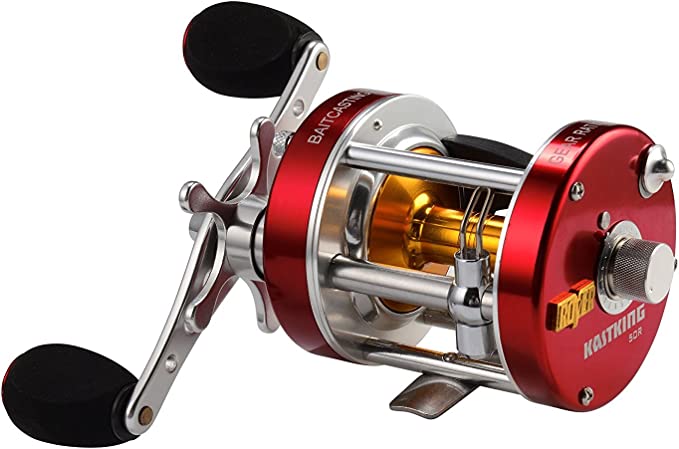ACEBEAM P20: The Ultimate Long-Range Flashlight for Extreme Conditions
Update on Sept. 16, 2025, 3:44 a.m.
A handheld device that can illuminate a target nearly a mile away feels like science fiction. But it’s not magic—it’s a masterclass in optics, thermodynamics, and material science. Let’s break it down.
To hold a modern high-performance flashlight is to hold a paradox. It’s a cool, inert cylinder of metal that fits in your palm, yet with the press of a button, it unleashes a torrent of photons so intense it can rival the output of a car’s headlight. This isn’t just about being bright; it’s about projection, about casting a coherent beam of usable light across fields, valleys, and down endless corridors of darkness.
When a device like the ACEBEAM P20 claims a beam distance of 1280 meters—almost 1400 yards—it begs a fundamental question: How? How can so much power be generated, controlled, and projected from such a small package? The answer is an elegant symphony of three scientific acts: generating the light, focusing it with extreme prejudice, and engineering a system that can survive the sheer violence of the effort.

Act I: The Two Souls of Light - Why Bright Isn’t Always Far
The first and most common mistake we make when thinking about light is to treat it as a single property. We see a number like “5500 lumens” and assume it directly translates to distance. It doesn’t. To understand why, we must recognize that light has two souls: its total volume and its focused intensity.
Think of it like water from a firehose. The luminous flux, measured in lumens, is the total amount of water gushing out of the hose per second. A 5500-lumen output is a colossal amount of water—a true flood of photons. It can illuminate an entire room in a blinding flash. But if you just let this water pour out, it will splash uselessly a few feet away. It has volume, but no direction.
To hit a target far away, you need a nozzle. This nozzle doesn’t create more water, but it concentrates the existing flow into a high-pressure jet. This focused, directional intensity is called luminous intensity, and it’s measured in candela. It is candela, not lumens, that is the secret ingredient to a flashlight’s “throw.” A high-candela beam is a tight, disciplined spear of light, while a high-lumen, low-candela beam is an undisciplined, short-range flood.
Distance is light’s ultimate enemy. The intensity of light falls off dramatically according to the Inverse Square Law, which states that the amount of light hitting a surface decreases by the square of the distance to the source. To have any meaningful illumination on a target 1280 meters away, the initial beam must possess an astronomical candela rating to overcome this exponential decay. This is the first part of the puzzle: creating a light source with immense raw output (high lumens) and then focusing it into a beam of almost unbelievable intensity (high candela).

Act II: The Photon Engine and its Focusing Lens
At the heart of this light-generating beast is the “engine”—in this case, a specialized high-output LED called the Luminus SBT-90.2. This is not the gentle, efficient LED in your desk lamp. It’s a large, power-hungry semiconductor die designed for one purpose: to convert a massive amount of electrical current into the purest, most intense light possible.
But even this powerful engine produces photons that scatter in many directions. The second critical task is to capture as many of these stray photons as possible and force them to travel in the same direction. This is the art of collimation.
This is achieved through a precision-engineered optical system, typically a deep, smooth reflector or a specialized lens. The geometry of this optical element is calculated with microscopic precision. Its sole purpose is to gather the chaotic burst of light from the LED and redirect it forward in a column of parallel or near-parallel rays. A 3mm-thick slab of tempered, anti-reflective glass protects this delicate system, ensuring that the maximum number of photons escape to join the main beam. The result is the transformation of a chaotic floodlight into a disciplined spotlight, a beam with the high candela required to conquer the vast expanse of darkness.
Act III: The Unseen War - Power vs. Heat
Generating this much light is an act of brute force, and it requires a formidable power source. The P20 is fueled by a 21700 lithium-ion cell, a battery format prized for its high energy density and, crucially, its high discharge rate. It can dump a huge amount of current on demand to feed the hungry LED.
However, this conversion of electricity to light is not perfectly efficient. The laws of thermodynamics are absolute, and a significant portion of that electrical energy is inevitably lost as waste heat. In a high-performance flashlight, this isn’t just a minor warmth; it’s a raging inferno at the microscopic level. The LED becomes the equivalent of a tiny electric stove, and this heat is its mortal enemy. Excessive heat degrades the LED, permanently reducing its output and lifespan in a process known as thermal droop.
This brings us to the flashlight’s unsung hero: its thermal management system. The entire aluminum body of the flashlight is designed to act as a heat sink. Heat is rapidly pulled away from the LED via a dedicated thermal path—often involving copper boards—and spread across the large surface area of the body, where it can radiate into the air.
This is why a flashlight like this can only sustain its maximum 5500-lumen “Turbo” mode for about three minutes before it automatically “steps down” to a lower, more sustainable level. This step-down is not a flaw; it is a critical, life-saving feature. It’s a pre-programmed, intelligent retreat from a level of performance that is physically unsustainable, protecting the delicate LED from self-destruction. It is the pinnacle of engineering trade-offs: a brief, glorious sprint of peak power, balanced against the marathon of long-term reliability.

Epilogue: The Fortress of Light
For this entire system to function, it must be housed in a body that can both facilitate its function and protect it from the world. The choice of material is A6061-T6 aluminum. This isn’t just any metal; it’s an aerospace-grade alloy that has undergone a T6 temper treatment, giving it exceptional strength while remaining lightweight.
But the real magic is on the surface. The body is protected by a Type III Hard Anodized finish. This isn’t a layer of paint. It’s an electrochemical process that grows an extremely hard, dense layer of aluminum oxide (essentially, synthetic sapphire) directly from the underlying metal. This ceramic-like armor is incredibly resistant to scratches, abrasion, and corrosion.
Finally, the entire fortress is sealed against the elements to an IP68 standard. In this code, the ‘6’ means it’s completely dust-tight, and the ‘8’ means it’s rated for continuous immersion in water, in this case up to 2 meters deep. This level of protection is achieved through precision machining and rubber O-ring seals. It also explains design choices that might seem inconvenient, like having to remove the battery to charge it. By omitting a USB charging port on the body, the designers eliminate a major potential point of entry for water and dust, prioritizing ultimate reliability over minor convenience.
From the physics of light to the chemistry of its surface, a high-performance flashlight is a testament to multidisciplinary engineering. It’s a complex, interconnected system where every choice—from the type of LED to the lack of a charging port—is a deliberate decision in the pursuit of pushing a beam of light just a little bit further into the dark. It is a beautiful reminder that sometimes, the most impressive technology is the one that allows us to simply, and profoundly, see.































